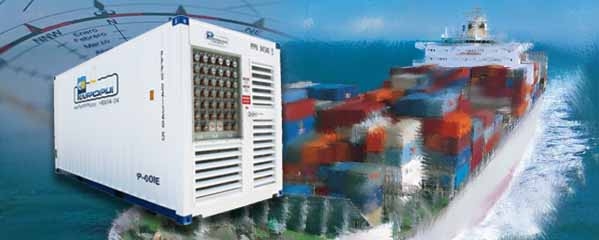In addition to providing operators with a heightened level of safety and simplified installation, ESL’s complete line of UL/cUL Listed refrigerated container plugs are designed to withstand wet marine environments and ensure a watertight seal. Watch the magic as ESL demonstrates its playful take on a water ingress test.
Intermodal Power
Determining the Right Fit: Single-gang vs. Multi-gang Reefer Outlet (socket) Installations
When it comes to designing reefer racks, the question of whether to install individual reefer outlets (sockets) or group several outlets in a single enclosure (multi-gangs) is often overlooked. Past experiences or canned designs seem to be the driving factors behind selecting one of these alternatives. This is a decision that impacts both installation costs & operations, and requires some consideration. Read more
Need & Desire Drive Real-Time Capabilities in RTE’s Reefer Monitoring Systems
Distribution is often referred to as the “Achilles heel” of the cold chain operation and has a major impact on society. According to a study (pdf) released by the UN Food and Agriculture Organization (FAO) in 2011, approximately 1.3bn tonnes (or one-third of the world’sfood produced for human consumption) is lost or wasted globally due to inefficiencies in the cold chain. Inconsistent and improper refrigeration through the use of reefer containers is a large contributor to this waste
Advantages of Third-party Certification
To customers, distributors, and retailers, a certification mark means that they are purchasing a product that has been evaluated by an accredited independent organization. This third-party certification for electrical and power products means that a qualified independent testing laboratory has reviewed the manufacturing process of the particular product and has concluded that the final product complies with specific safety standards.
Power Pool Plus and ESL Reefer Outlets Provide Expanded Power Generation Versatility
Power Pool Plus has been providing power generation solutions for the refrigerated transportation industry for over 20 years. Over that time we have taken great pride in building products that provide years of service in some of the harshest and most demanding environments. Our products can be found providing critical generator power to refrigerated containers around the globe, such as the fast paced, rough and tumble world of shipping ports, the hot and humid growing fields of South and Central America, and on the decks of ships and barges traversing the seas in any type of weather.




